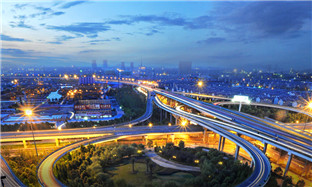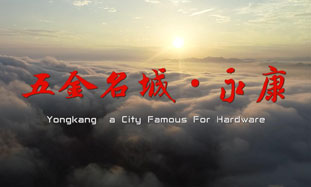Eight Advantageous Resources
3. Regional Industrial Clusters
The regional industrial areas of Zhejiang, being the first and largest in China, bear the traits of "small commodities, large markets, low costs and high profits". They have maintained a vigorous momentum and have bright prospects of development. According to incomplete statistics, in the whole province there are more than 500 industrial clusters each having a gross industrial output value of over 100 million RMB, covering 175 sectors and more than 240,000 enterprises, which accounts for around 50% of the provincial total output value. Among them, the products of 52 sectors enjoy a domestic market share of over 30%, and the products of 14 sectors have a world market share of over 10%. For instance, ties manufactured in Shengzhou occupy a domestic market share of 80% and a world market share of over 30%.
The manufacturing industry featuring cluster economy is the main drive of the economic "takeoff" of Zhejiang, which will exert even greater effects in the next round of speedy development. Nowadays, in areas around the Hangzhou Bay, along the Wenzhou-Taizhou coast and along the Jinhua-Quzhou-Lishui Expressway, the layout of ten national manufacturing industry centers comes into plain view. Upon completion of the construction of the centers, the effects of integration, radiation and scale would be more impressive. The textile & chemical fiber industry, which focuses on the development of chemical fiber, chemical fiber fabrics, silk, warp knitting, household and industrial textiles, will account for around 25% of the national market, making them important world bases of textile production and export. The fine chemical industry is expected to account for over 15% of the national scale, while the proportion of fluorine chemical industry is to be over 50% and organic silicon to be over 30%. In order to incorporate more automotive parts into the international purchasing system and increase its industrial proportion to over 15% of the national scale, the auto and motorcycle industry needs to strengthen the systematic supply and modularized technical production of auto and motorcycle parts. The manufacturing industry in Zhejiang is moving toward a higher level and opening up more domains of development.
Zhejiang has many specialized markets, which are of large scale, comprehensive strengths and broad spheres of radiation. The commodities cover all the basic categories of the means of living and production. By the end of 2005, the sales volume of the 4008 commodity markets of the province reached 717.3 billion RMB. Thus, Zhejiang is referred to as "A Major Market Province": the three indexes, i.e., the total market sales volume, the number of markets with over a hundred million RMB and the sales volume of individual markets, rank the first in China for many consecutive years.
4. Coordinated Urban-rural Development
Zhejiang attaches importance not only to the leading role of cities but also to the countryside and farmers' dynamic functions in promoting coordinated urban-rural development. In every local place, the urban-rural dualistic structure has been disintegrated. Against the blueprint of "constructing a thousand model villages and renovating ten thousand villages" and with urbanization as a carrier, every locality makes overall plans, integrates resources, innovates structures and constructs supporting facilities. Accordingly the pattern of urban-rural integrated development wherein the city leads the countryside and industry pushes agriculture has been formed, which further enhances the urban functions of integration, radiation and promotion. The settlement of the "three issues on farmers, agriculture and countryside" is given top priority. The development of profitable agriculture will be continuously boosted, the construction of new countryside will be speeded up, the infrastructure in cities will extend to the countryside, the labor markets will expand to the countryside, and social security as well as public health care systems shall cover the countryside and urban-rural economy and social structures are gradually being integrated.
Zhejiang took the lead in pushing the reform on the ownership structure of township enterprises, the household registration system in small towns and the liberalization of the grain market. All these have made Zhejiang a pioneer in the nation in coordinated urban-rural development. The increase of farmers' incomes in Zhejiang has been the greatest in the nation for 17 consecutive years. Our province also took the lead in establishing the system for ensuring a minimum standard of living for both urban and rural residents. Our province decided to formally implement the new rural medical care cooperative system and medical aid system from August 2003. On the basis of a county, a unified planning for serious diseases has been carried out, with the focus on providing subsidies which cover large hospital and medical bills of the insured farmers.

 Print
Print Mail
Mail
 6th World Internet Conference
6th World Internet Conference Why Zhejiang
Why Zhejiang Yongkang, a city famous for hardware
Yongkang, a city famous for hardware Zhejiang Release
Zhejiang Release Zhejiang News
Zhejiang News